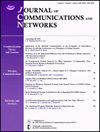基于多阶段量子卷积神经网络的自动驾驶稳定分类控制
IF 3.2
3区 计算机科学
Q2 COMPUTER SCIENCE, INFORMATION SYSTEMS
引用次数: 0
摘要
实时处理和高分类精度是自动驾驶系统的基本要求。然而,现有的分类神经网络模型经常面临计算效率和准确性之间的权衡,需要开发先进的优化方法来解决这一限制。此外,动态驾驶环境通过利用量子计算原理,特别是叠加和纠缠的特性,提供了提高分类性能的机会。针对这些挑战,提出了一种多阶段量子卷积神经网络(MS-QCNN)方法,旨在通过有效利用QCNN的多阶段结构来提高图像分析性能。应用Lyapunov优化框架实现最优性能,在保证系统稳定性的同时最大化时间平均效率。该框架根据环境变化动态调整MS-QCNN模型,增强队列稳定性并实现最佳的时间平均性能。本文章由计算机程序翻译,如有差异,请以英文原文为准。
Stabilized classification control using multi-stage quantum convolutional neural networks for autonomous driving
Real-time processing with high classification accuracy is a fundamental requirement in autonomous driving systems. However, existing neural network models for classification often face a tradeoff between computational efficiency and accuracy, necessitating the development of advanced optimization methods to address this limitation. Additionally, dynamic driving environments offer opportunities to enhance classification performance by leveraging the principles of quantum computing, particularly the properties of superposition and entanglement. In response to these challenges, a multi-stage quantum convolutional neural network (MS-QCNN) approach is proposed, designed to improve image analysis performance by effectively utilizing the multi-stage structure of QCNN. A Lyapunov optimization framework is applied to achieve optimal performance, which maximizes time-averaged efficiency while ensuring system stability. This framework dynamically adjusts the MS-QCNN model in response to environmental variations, promoting enhanced queue stability and achieving optimal time-averaged performance.
求助全文
通过发布文献求助,成功后即可免费获取论文全文。
去求助
来源期刊
CiteScore
6.60
自引率
5.60%
发文量
66
审稿时长
14.4 months
期刊介绍:
The JOURNAL OF COMMUNICATIONS AND NETWORKS is published six times per year, and is committed to publishing high-quality papers that advance the state-of-the-art and practical applications of communications and information networks. Theoretical research contributions presenting new techniques, concepts, or analyses, applied contributions reporting on experiences and experiments, and tutorial expositions of permanent reference value are welcome. The subjects covered by this journal include all topics in communication theory and techniques, communication systems, and information networks. COMMUNICATION THEORY AND SYSTEMS WIRELESS COMMUNICATIONS NETWORKS AND SERVICES.

 求助内容:
求助内容: 应助结果提醒方式:
应助结果提醒方式:


